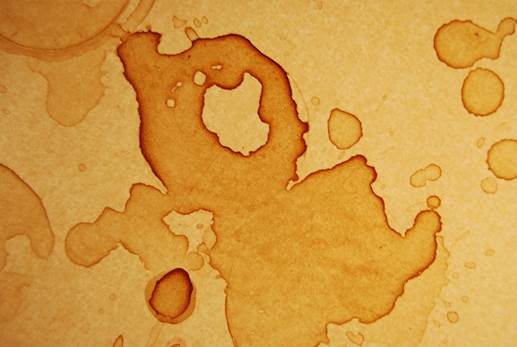Description

Disclaimer: Copyright infringement not intended.
Context
- Researchers from Indian Institute of Technology, Madras, have given new insights to Coffee Ring Effect.
About Coffee Ring effect
- A "coffee ring" is a pattern left by a puddle of particle-laden liquid after it evaporates.
- The phenomenon is named for the characteristic ring-like deposit along the perimeter of a spill of coffee.
- When a droplet dries on a surface, the particles suspended in it usually deposit in a ring-like pattern, leaving a stain or residue, called the coffee-ring.
- The mechanism behind the formation of these and similar rings is known as the coffee ring effect or in some instances, the coffee stain effect, or simply ring stain.

Flow mechanism
- The coffee-ring pattern originates from the capillary flow induced by the evaporation of the drop: liquid evaporating from the edge is replenished by liquid from the interior. The resulting edge-ward flow can carry nearly all the dispersed material to the edge. As a function of time, this process exhibits a "rush-hour" effect, that is, a rapid acceleration of the edgeward flow at the final stage of the drying process.
- Evaporation induces a Marangoni flow inside a droplet. The flow, if strong, redistributes particles back to the centre of the droplet. Thus, for particles to accumulate at the edges, the liquid must have a weak Marangoni flow, or something must occur to disrupt the flow. For example, surfactants can be added to reduce the liquid's surface tension gradient, disrupting the induced flow.
- Water has a weak Marangoni flow to begin with, which is then reduced significantly by natural surfactants.
New research
- Coffee Ring Effect is caused by the outward drift of suspended coffee particles from the centre, causing a denser, darkened rim.
- Now, researchers from Indian Institute of Technology, Madras, have shown that after reaching the rim, as the drop dries, some of the particles undergo a newly discovered inward drift too. While the inward drift would persist for sub-micron-sized particles, it would decrease with particle size.
Inward drift
- The inward movement takes place because the particles are ‘squished’ between the solid plate and the evaporating liquid interface. Hence, the ‘coffee’ ring is not formed at the point where the liquid touches the solid, but there is a small gap between the outermost edge and the ring.
Significance of new Research
- This research has applications in agriculture, forensic science and even disease diagnosis.
- This can help in understanding the drying of biologically relevant fluids like blood can help diagnose anaemic and hyperlipidaemic conditions.
- One of the long-term goals of the Researchers is to work with simulated [fluids] as well as blood drawn from different individuals with different conditions to come up with early diagnostic strategies.
https://epaper.thehindu.com/Home/ShareArticle?OrgId=G1BAANIO4.1&imageview=0&utm_source=epaper&utm_medium=sharearticle










